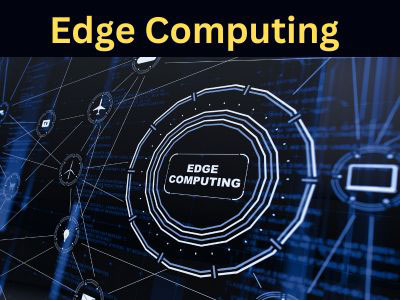What Are Examples Of Edge Computing?
Key Takeaway
Edge computing is widely used in smart cities, autonomous vehicles, industrial IoT, retail, and healthcare. In smart cities, it powers real-time traffic management and energy optimization. Autonomous vehicles rely on edge computing to process sensor data instantly, enabling safe navigation. In industrial IoT, edge devices ensure real-time monitoring and predictive maintenance.
Retail applications include personalized customer experiences through in-store analytics. In healthcare, edge computing enhances patient care by processing data from wearables and devices locally, ensuring faster responses. These examples highlight edge computing’s ability to deliver efficiency and responsiveness across diverse industries.
Smart Cities and Edge Computing Applications
Smart cities are a prime example of how edge computing is transforming urban living. These cities rely on interconnected sensors, devices, and systems to gather and process data in real-time. From traffic management to energy distribution, edge computing ensures seamless, efficient operations by reducing latency and enabling immediate decision-making. Imagine a scenario where traffic lights adjust dynamically based on congestion data processed locally at the edge. This real-time optimization not only minimizes delays but also reduces fuel consumption and emissions.
Another key application lies in public safety. Surveillance cameras powered by edge computing can detect unusual activities and alert authorities instantly, ensuring faster response times. Similarly, smart grids leverage edge technology to monitor energy consumption and adjust supply, enhancing sustainability.
By bringing computation closer to the action, edge computing makes smart cities more efficient, responsive, and sustainable. This decentralization is critical as urban populations continue to grow and demand smarter infrastructure.

Edge Computing in Autonomous Vehicles
Autonomous vehicles are one of the most exciting and critical applications of edge computing. These vehicles generate enormous amounts of data from sensors, cameras, and radar systems. Processing this data in the cloud would introduce delays, which could be catastrophic in real-time scenarios like avoiding a collision. Edge computing solves this by enabling data processing directly within the vehicle or at nearby edge nodes.
For instance, a self-driving car can detect obstacles, identify road signs, and make navigation decisions in milliseconds, thanks to edge technology. Additionally, edge computing facilitates vehicle-to-vehicle (V2V) and vehicle-to-infrastructure (V2I) communication, ensuring smoother traffic flow and enhanced safety.
Autonomous vehicles demonstrate how edge computing enables instant, reliable decision-making, laying the foundation for a future where roads are safer and more efficient.
Industrial IoT and Edge Deployment
The industrial sector has embraced edge computing through the Industrial Internet of Things (IIoT). Factories and plants are now equipped with sensors and devices that collect data from machinery, assembly lines, and supply chains. Processing this data at the edge allows for predictive maintenance, real-time monitoring, and improved operational efficiency.
For example, in a manufacturing plant, edge devices can detect anomalies in equipment performance and predict potential breakdowns. This reduces downtime and minimizes losses. Furthermore, edge computing enables quality control by analyzing production data in real-time, ensuring products meet strict standards.
Industrial IoT powered by edge computing is a game-changer, helping businesses optimize operations, reduce costs, and achieve higher levels of productivity.
Retail and Personalized Customer Experiences
Retail is another industry where edge computing is making a significant impact. With the rise of e-commerce and tech-driven physical stores, the competition to deliver exceptional customer experiences has intensified. Edge computing helps retailers process customer data locally, enabling personalized shopping experiences and faster service.
For instance, smart shelves equipped with edge devices can track inventory levels and alert staff when restocking is needed. Similarly, in-store analytics powered by edge technology can monitor customer behavior, offering tailored recommendations in real-time. Self-checkout systems also benefit from edge computing, ensuring smooth and efficient transactions without the need for a centralized cloud system.
By enhancing operational efficiency and customer satisfaction, edge computing is revolutionizing the retail landscape.
Healthcare Innovations Powered by Edge Computing
Healthcare is an industry where speed and accuracy are paramount, making edge computing indispensable. From wearable devices to telemedicine platforms, edge computing ensures that critical data is processed quickly and securely, often saving lives in the process.
Consider wearable health monitors that track vital signs like heart rate and blood pressure. These devices use edge computing to analyze data locally and alert users or medical professionals in case of abnormalities. Telemedicine, another growing field, leverages edge technology to enable seamless video consultations and real-time diagnostics, even in remote areas.
Hospitals also deploy edge computing for managing medical imaging and patient records. By processing data locally, edge devices enhance security and reduce the time needed for critical diagnoses and treatment planning.
Edge computing is driving healthcare innovations, improving patient outcomes and making medical services more accessible and efficient.
Conclusion
Edge computing is more than a technological advancement—it’s a transformative force reshaping industries worldwide. From smart cities to autonomous vehicles, industrial IoT to retail and healthcare, its applications demonstrate the power of processing data locally for real-time insights and actions. As businesses and technologies continue to evolve, edge computing will remain a cornerstone of innovation, ensuring efficiency, speed, and adaptability in an increasingly data-driven world.

